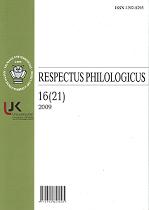R. M. RILKE’S IDĖJOS TĖVO STANISLOVO PAMOKSLUOSE
RAINER MARIA RILKE’S IDEAS IN FATHER STANISLOVAS’ SERMONS
Author(s): Gabija Bankauskaitė-Sereikienė, Žydrė DargužytėSubject(s): Language and Literature Studies
Published by: Vilniaus Universiteto Leidykla
Keywords: idėjų panašumas1; sąšaukos2; kančia3; meilė4; Dievas5; prasmė6;
Summary/Abstract: The worldviews of Rainer Maria Rilke’s poetry and Father Stanislovas’ sermons appear to be strikingly similar. We can come across of Rilke’s ideas in almost all sermons written by the Capuchin monk. They are recurrent in one or another way in the whole cycle of Father Stanislovas’ sermons About Love and Service written in the period of 1961-1996. The monk used to read and translate the poetry by the German poet. This article analyzes Father Stanislovas’ sermons not as religious texts but as philosophical works. In an attempt to reason Rilke’s influence on Father Stanislovas’ sermons, a hypothesis is raised that Father Stanislovas referred to Rilke’s ideas while preparing his sermons: he quoted, paraphrased and subtly conveyed the poet’s ideas. Thus, 212 Father Stanislovas’ sermons and Rilke’s poetry are the focus of the present research. The texts of both creators are being interpreted and compared. The article attempts to show that Father Stanislovas’ sermons are philosophical and literary works which embody not only religious but also philosophical symbols, existential ideas and Rilke’s ideas are of utmost importance there. Rilke’s ideas about God, love, time, suffering, the unity of matter and spirit are the most recurrent in the sermons. The God is an essential link of being for both creators; the relation between the God and human being is comprehensive, timeless and complex since the human being finds the God just in active communication with the world. The love is comprehended as the most mature expression of existence without which no transformations are possible. Much attention should be paid to time displacement which is natural and which highlights the unity and development of ontological phenomena. The reality is closely related to suffering. The revelation of the reality is possible just after experiencing suffering and understanding its meaning. Both creators are considerate of matter and spirit. Although their unity is possible, human beings have to establish relation with the surrounding world, with the things of the material world, treat life and death as natural order and not be afraid of either of them, i.e. human beings have to give sense to their life at the present time.
Journal: Respectus Philologicus
- Issue Year: 2009
- Issue No: 16 (21)
- Page Range: 137-149
- Page Count: 13
- Language: Lithuanian

